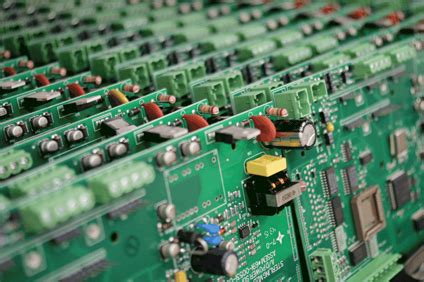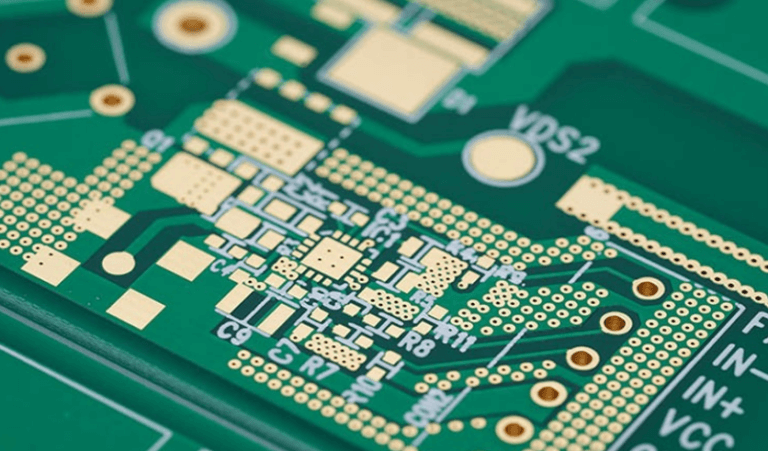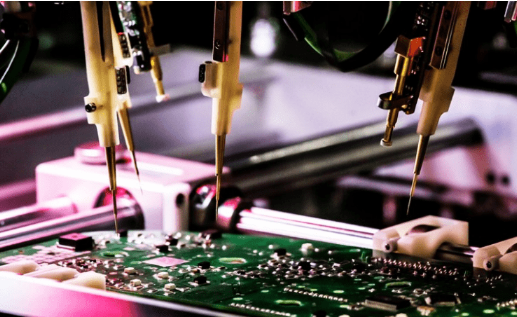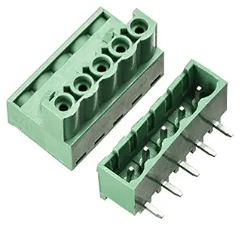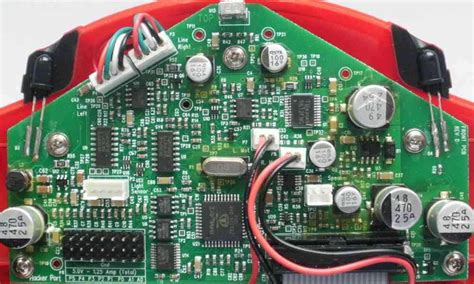Unlocking Innovation: The Power of 4PCB Assembly in Electronics
Key Takeaways
The rise of 4PCB assembly marks a significant transformation in the field of electronics, enabling inventors and manufacturers to leverage advanced technologies for better efficiency. This method of pcb assembly not only enhances design flexibility but also streamlines the production process. With pcba solutions, manufacturers can adapt to varying requirements without excessive costs. The integration capability and compact nature of 4PCB technology facilitate intricate designs that were previously challenging to achieve. As production timelines shorten, stakeholders find themselves with accelerated time-to-market, allowing them to capitalize on emerging opportunities swiftly. Moreover, the versatility of 4PCB assembly is fostering an environment ripe for innovation, driving forward the boundaries of what is possible in electronic manufacturing. Each advancement not only contributes to cutting-edge products but also supports sustainability through reduced waste and efficient resource usage in the design and production phases. Thus, embracing this technology becomes crucial for companies aiming to remain competitive in an ever-evolving market landscape.
Understanding 4PCB Assembly: A New Era in Electronics
The advent of 4PCB assembly marks a significant milestone in the realm of electronics, offering enhanced capabilities that traditional manufacturing methods cannot match. By employing pcba techniques, manufacturers can produce compact and intricate circuit designs that were previously deemed impossible. This innovative technology allows for a higher density of components on a single board, thereby maximizing efficiency and performance. With the ability to easily integrate various technologies—such as sensors, microcontrollers, and communication modules—4PCB assembly empowers designers to create more versatile and functional electronic devices.
Moreover, the adoption of 4PCB assembly leads to significant reductions in production costs. As manufacturers streamline processes through automation and advanced techniques, they can minimize labor expenses while also cutting down on material waste. This results in a more cost-effective solution without sacrificing quality or reliability. Additionally, the rapid prototyping capabilities associated with pcba enable quicker iterations in the design phase, allowing companies to innovate faster and respond to market demands more adeptly.
As we delve deeper into this new era brought forth by 4PCB assembly, it’s essential for industry stakeholders to realize its potential not just as a manufacturing tool but as a catalyst for transformative innovation. The future of electronic devices hinges on advancements in this technology, making it imperative for businesses to stay informed and adaptable in their strategies.
“Innovation is not just about new ideas; it’s about implementing them effectively.”
The Benefits of 4PCB Assembly: Design Flexibility and Cost Reduction
The incorporation of 4PCB assembly in the electronic manufacturing landscape introduces remarkable advantages, particularly in terms of design flexibility and cost reduction. This assembly technique allows engineers to create intricate circuit designs that were previously challenging or impossible with traditional methods. With 4PCB technology, the layout can be easily modified during the design phase, enabling quick adaptations to meet specific requirements while maintaining optimal performance. This adaptability not only enhances product functionality but also fosters creativity, allowing for innovative designs that cater to evolving market demands.
In terms of cost efficiency, pcb assembly processes capitalize on minimized material waste and reduced labor costs. By streamlining production methods, manufacturers can lower operational expenses, passing on these savings to consumers. Moreover, the enhanced speed and efficiency of the pcba process means shorter lead times and faster delivery to market, which is crucial in today’s fast-paced tech environment. As a result, businesses can achieve greater profit margins while offering competitive pricing.
Overall, the benefits provided by 4PCB assembly set a new standard in electronic manufacturing, making it an invaluable asset for companies seeking to innovate and optimize their production capabilities.
Accelerating Time-to-Market: How 4PCB Assembly Transforms Production
The advent of 4PCB assembly has significantly changed the landscape of electronic manufacturing, notably by enabling quicker transitions from concept to production. This technology allows manufacturers to create PCBA (Printed Circuit Board Assembly) with enhanced efficiency and streamlined processes, effectively reducing the time required for various phases of production. By employing multilayer boards with integrated functionalities, designers can minimize the complexity typically associated with traditional pcb assembly methods.
Benefits of Accelerating Time-to-Market
| Benefit | Description |
|---|---|
| Faster Prototyping | Prototypes can be developed and tested in shorter timeframes. |
| Reduced Design Cycles | Rapid iterations lead to better design validation before mass production. |
| Enhanced Collaboration | Integrated platforms allow for better communication among teams, speeding up decision-making processes. |
Moreover, the usage of advanced materials and techniques in 4PCB assembly not only enhances the performance of electronic devices but also lowers costs associated with prototyping and modifications. As time-to-market becomes a critical factor in staying competitive, companies that adopt this technology can respond swiftly to market demands and consumer trends. Overall, 4PCB assembly is paving the way for a future where electronic manufacturing is faster and more adaptable than ever before.
The Role of 4PCB Assembly in Driving Electronic Innovation
The evolution of 4PCB assembly is significantly influencing the landscape of electronic innovation. By facilitating a seamless integration of various components within a compact design, pcb assembly allows engineers to explore new realms of creativity and functionality. This advanced process not only enhances the density and complexity of circuit designs but also ensures that pcba can accommodate the ever-growing demands for miniaturization in technology. As companies strive for more innovative products, the capability to leverage 4PCB assembly becomes essential. This method empowers organizations to experiment with cutting-edge features while adhering to tight deadlines and budget constraints. Furthermore, it encourages lighter designs without compromising performance, thus paving the way for smarter devices that cater to consumer preferences and market trends. By harnessing the power of 4PCB assembly, manufacturers are able to drive innovation forward, enabling faster iterations in product development that align with rapidly evolving technological advancements.
Future Trends: The Evolution of Electronic Manufacturing with 4PCB Technology
As the landscape of electronic manufacturing continues to evolve, 4PCB assembly is at the forefront, shaping the future of production methodologies. This innovative approach to pcb assembly offers unique advantages that address the ever-increasing demand for versatility and efficiency. With the integration of pcba technology, manufacturers are experiencing enhanced design flexibility, allowing for more complex and compact designs that were previously unfeasible. This adaptability not only reduces production costs but also minimizes waste, leading to a more sustainable manufacturing process.
Moreover, the rapid advancements in 4PCB assembly technology are streamlining workflows and accelerating time-to-market. Companies leveraging this technology can swiftly prototype and scale their products without compromising on quality. As a result, businesses are better positioned to respond to market demands and consumer preferences swiftly.
Looking ahead, it’s clear that 4PCB assembly will continue to play a crucial role in driving innovation within the electronics sector. As manufacturers embrace these advancements, we can anticipate a surge in groundbreaking electronic devices that redefine functionality and user experience. The ongoing evolution of electronic manufacturing through 4PCB technology not only promises efficiency but also inspires creativity and innovation in product design and development.
Case Studies: Successful Implementations of 4PCB Assembly
The integration of 4PCB assembly has been a game changer for many companies, showcasing significant advancements in pcb assembly processes. One remarkable case is that of a leading smartphone manufacturer, which adopted pcba technology to streamline its production line. By utilizing 4PCB assembly, this company was able to achieve a remarkable reduction in production costs while simultaneously increasing their design flexibility. The ability to create compact and efficient layouts resulted in a sleeker product design that appealed to both consumers and industry critics alike.
Another inspiring example can be seen in the automotive sector, where an electric vehicle manufacturer implemented 4PCB assembly to reduce the weight of their components. This innovative approach not only enhanced vehicle efficiency but also paved the way for quicker production cycles. As they embraced this technology, the company was able to bring their vehicles to market faster than competitors who relied on traditional PCB methods. Such successful implementations highlight how organizations leveraging pcba can position themselves as leaders in innovation while meeting the increasing demands for efficiency and sustainability across various sectors.
Through these case studies, it becomes evident that 4PCB assembly is not just a trend but rather an essential element influencing the future landscape of electronic manufacturing. The potential for cost savings and improved timelines accelerates competitiveness, driving greater innovation across various industries.
Challenges and Solutions in 4PCB Assembly Processes
The transition to 4PCB assembly involves navigating several challenges that can impact production efficiency. One of the primary obstacles is the complexity of implementing advanced pcb assembly techniques, which can require substantial training for personnel. Embracing new technology also necessitates significant investment in equipment and software, presenting a barrier for smaller manufacturers. High-precision techniques and materials are crucial in ensuring that the increased design flexibility of pcba does not compromise quality. Additionally, supply chain issues can arise due to a reliance on specialized components crucial for 4PCB assembly. However, these challenges can be mitigated through strategic partnerships with suppliers and ongoing staff training programs that enhance skills in new technologies. Innovating within these constraints leads to improved processes over time, demonstrating that while the hurdles are considerable, the potential rewards significantly outweigh them. By continuously refining pcb assembly methodologies and leveraging industry best practices, manufacturers can successfully navigate these complexities while maintaining a competitive edge in the evolving landscape of electronic manufacturing.
Conclusion
In summary, the advent of 4PCB assembly has ushered in a transformative era for the electronics industry. By enabling enhanced design flexibility, pcba technology allows engineers to experiment with innovative layouts and circuit configurations that were previously challenging to implement. This flexibility not only fosters creative solutions but also leads to significant cost reductions throughout the production process. As a result, companies can allocate resources more efficiently, thus optimizing their budgets while maintaining high-quality standards. Moreover, with the accelerated time-to-market that 4PCB assembly offers, manufacturers can now respond swiftly to ever-evolving market demands, keeping them ahead of their competitors. The overall impact on electronic innovation is profound; as businesses embrace this technology, they are better equipped to introduce groundbreaking products that push the boundaries of functionality and performance. This synergy between 4PCB assembly and innovation will undoubtedly shape the future of electronic manufacturing and create exciting possibilities for industries ranging from consumer electronics to aerospace and healthcare.
FAQs
What is 4PCB assembly?
4PCB assembly refers to the process of manufacturing electronic circuits using four-layered PCBs. This technology allows for greater circuit density and performance, ideal for various applications in electronics.
How does 4PCB assembly contribute to design flexibility?
By utilizing four-layered designs, pcb assembly offers enhanced routing options, which allows engineers to optimize layouts and reduce size without compromising functionality.
Can 4PCB assembly help reduce production costs?
Yes, implementing pcba can significantly lower production costs. The ability to streamline processes and minimize material usage leads to more efficient manufacturing, thereby reducing overall expenses.
How does 4PCB assembly accelerate time-to-market?
With its advanced design capabilities and efficient production processes, 4PCB assembly enables quicker prototyping and shorter manufacturing cycles, helping companies launch products faster.
What role does 4PCB technology play in driving electronic innovation?
The versatility of pcb assembly facilitates the development of cutting-edge electronics by allowing manufacturers to explore complex designs and incorporate new technologies seamlessly.



